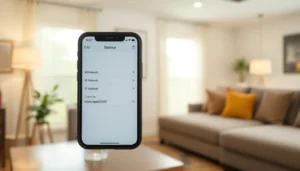Table of Contents
ToggleIn a world where technology seamlessly intertwines with daily life, it’s no wonder that the fashion industry is jumping on the wearable train, because nothing screams ‘I’m stylish’ quite like a jacket that tracks your steps. Imagine clothing that not only looks good but also does good for your health. In this text, we’ll explore the fascinating realm of wearable clothing brands, proving that style doesn’t have to come at the expense of function. Buckle up: fashion’s future is just getting started.
Understanding Wearable Technology in Fashion

Wearable technology in fashion is a game-changer, merging aesthetics with practicality. This innovative intersection includes everything from fitness trackers embedded in sportswear to smart jackets that monitor body temperature. By integrating sensors and connectivity into fabric, brands are elevating the user experience, allowing consumers to stay connected without the bulk of traditional tech. This seamless integration not only enhances functionality but also encourages a new lifestyle for tech-savvy individuals.
The Rise of Wearable Clothing Brands
The past decade has seen a meteoric rise in wearable clothing brands, driven by innovative startups and established fashion houses alike. Companies like Wearable X and Athos are at the forefront, pushing the envelope on what clothing can do. This surge can be attributed to the increased consumer demand for convenience and tech solutions in everyday life. Consumers no longer want separate gadgets for monitoring their health: they prefer their clothes to do the heavy lifting. As a result, more brands are developing collections that marry style with advanced technology, creating a buzz in the market.
Key Features of Wearable Clothing
When it comes to wearable clothing, several key features stand out. First is connectivity, which allows garments to sync with smartphones and other devices. This leads to real-time data collection that can provide insights into fitness and health. Next, comfort is crucial: wearables need to feel as good as they look. No one wants to sport a high-tech shirt that feels like sandpaper. Third, versatility in design ensures that these clothes can transition seamlessly from workouts to casual outings. Finally, durability must not be overlooked, wearable clothing needs to withstand the rigors of regular use while still appearing fashionable.
Consumer Trends in Wearable Fashion
Today’s consumers are increasingly seeking functional fashion. The demand for products that enhance lifestyle while maintaining aesthetic appeal has led to soaring popularity for brands specializing in wearables. Health consciousness also plays a vital role: as people become more aware of their wellness journeys, they look for clothing that can contribute. Also, the explosion of social media has made it easier to share and promote these products, leading to increased visibility and desirability. In sum, the formula for success in wearable fashion hinges on functionality, style, and social influence.
Challenges Facing Wearable Clothing Brands
Even though the waves of innovation, wearable clothing brands face several challenges. One major hurdle is technological integration: balancing cutting-edge features while ensuring ease of use can be tricky. Besides, consumer skepticism around reliability persists, as many wearables have garnered reputations for poor performance. There’s also the challenge of data privacy: users are wary about how their personal information is collected and used. Brands must navigate these concerns while keeping customer experience front and center.
Future Trends in Wearable Clothing
Looking ahead, the future of wearable clothing seems promising, with several trends emerging on the horizon. Eco-friendly materials are expected to become commonplace, allowing brands to appeal to environmentally-conscious consumers. Enhanced functionality, such as advanced biometric monitoring, is also on the rise. Also, companies are exploring augmented reality elements, providing even richer user experiences. As technology continues to evolve, the fusion of style and practicality will likely define the next generation of wearable clothing.







